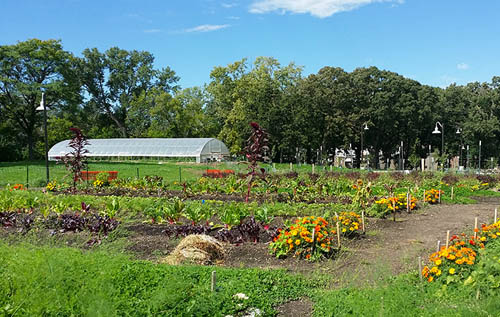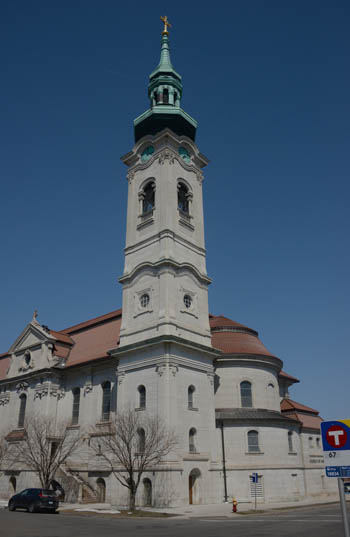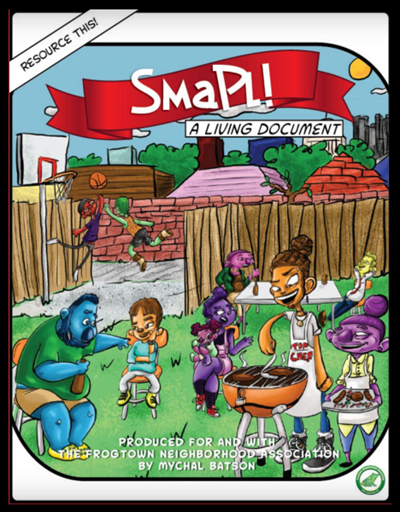NEIGHBORHOOD DISTRICT 7 -
THOMAS-DALE - “FROGTOWN”
- Location - Saint Paul, bounded by Interstate 35E (east), University Ave. (south), Lexington Avenue (west), and BNSF rail line (north)
- Population -15,506*
- Households - 4,816*
- Jobs - 7,950*
- Regional Parks - Como Regional Park, just north of the district
- Transit - Green Line LRT; bus routes 3, 62, 65, 67, 68, 71, 83
*American Community Survey, 2012-2016, U.S. Census
This month’s local planning feature focuses on an innovative approach taken by a Saint Paul neighborhood to chart its future in a “small area plan.”
What’s in a name?
One Saint Paul neighborhood has understandably earned several, being one of the most historic, diverse, and vibrant locales in the Twin Cities.
Located to the west and slightly north of the State Capitol, the area’s official designation, assigned by the city, is “District 7.” Another is “Thomas-Dale,” named for intersecting streets, which provides a hint of locational orientation.
But “Frogtown” is both the oldest and most familiar name, and what residents themselves call their community of more than 15,000 people.
“There is what you can call the ‘space’ of Frogtown, and then there are the cultures and the people,” said Caty Royce. Royce is director of the Frogtown Neighborhood Association, which serves as the District 7 Planning Council. “Culturally and ethnically, Frogtown is one of the most diverse places in the metro area—even the state.”
Frogtown: Home to immigrants for a century
 For over 100 years, Frogtown has seen waves of immigrants establish homes and businesses, originally German, Scandinavian, and Polish. Later, other immigrant groups such as Hmong, Vietnamese, Somali and Latinos, would mold much of the character of the area.
For over 100 years, Frogtown has seen waves of immigrants establish homes and businesses, originally German, Scandinavian, and Polish. Later, other immigrant groups such as Hmong, Vietnamese, Somali and Latinos, would mold much of the character of the area.
University Avenue is lively with immigrant-owned businesses, including African markets and small traditional Mexican restaurants. Along four to five blocks is “Little Mekong,” a business and cultural district dotted with restaurants serving Cambodian, Thai, Laotian, Hmong, and Vietnamese cuisine. “There’s always this immigration story that flows through Frogtown and makes it what it is,” said Royce.
How did Frogtown get its name?
 In the 1860s and ‘70s, immigrants to Saint Paul settled just to the north of downtown. There they found a sandy, swampy area heavily populated by vocalizing frogs. The newcomers—German-Bohemians—dubbed the area Froschburg (“frog town”).
In the 1860s and ‘70s, immigrants to Saint Paul settled just to the north of downtown. There they found a sandy, swampy area heavily populated by vocalizing frogs. The newcomers—German-Bohemians—dubbed the area Froschburg (“frog town”).
A novel approach to planning
Roughly two years ago, the neighborhood association was facing the task of updating Frogtown’s “small area plan,” an urban planning document that the city would make part of the municipal long-range comprehensive plan. Around the metro area, cities are currently revising their comprehensive plans, looking ahead to the year 2040, and then submitting them to the Metro Council for review.
The question was: How do we express the character and aspirations of a community like Frogtown?
The city planning department had established a template for neighborhood plans that mimic the topics and format of a city plan, but at a smaller scale. For Frogtown community leaders, not a good fit.
“We didn’t want to do it,” said Royce. “But then we thought: We need to be the authors of our own story. And we can make it fun. We decided to do the plan as a graphic novel.”
The graphic novel would be peopled with neighborhood-type characters, questions, situations, challenges, and—not to leave out the planning angle—policy directions.
Engaging local artist to coordinate, draw the plan
 Tou Saiko Lee, a nationally known Hmong hip-hop artist and Bush fellowship recipient, was at the time a board member of the District 7 Council. He stepped down to serve as the main coordinator of the project.
Tou Saiko Lee, a nationally known Hmong hip-hop artist and Bush fellowship recipient, was at the time a board member of the District 7 Council. He stepped down to serve as the main coordinator of the project.
His job, starting out, was to research and define urban issues in the district. Initially, to draw in residents for conversations, he hosted more than half a dozen community meals in various parts of the district.
Royce gives an example. “The east part of the district is now the home area for the newest wave of immigrants—the Karen, originally from Myanmar,” she said. “There, Tou Saiko went to a Karen deli, asked what the favorite foods were, bought a bunch, and invited neighborhood residents to a Unity Healing Meal.”
Writing and drawing the graphic novel drew on talent already in the neighborhood—a young Frogtown artist, Mychal Batson. Batson created the dialog, text and illustrations, drawing on voices from the community. Another Frogtown artist, Megan Tate, helped edit, illustrate, and color the document.
Project leaders coordinated with city planner Tony Johnson to make sure it covered the necessary bases as a planning document. So the district plan, in the guise of a graphic novel, became SmaPl (“Smapple”)—for “small area plan.”
“In the end, SmaPl is a genuine expression of what the neighborhood is and the neighborhood’s dreams,” said Royce.
Council engagement grant supported plan development
The Metropolitan Council provided community engagement funds to support SAMPL’s development. The goal was to support the intentional involvement of the community in long-range planning efforts, so needs and vision are more reflective of the full community. Such engagement assures more equitable plans by including broader participation and direct leadership from people of color, people in poverty, and other historically underrepresented people.
More information